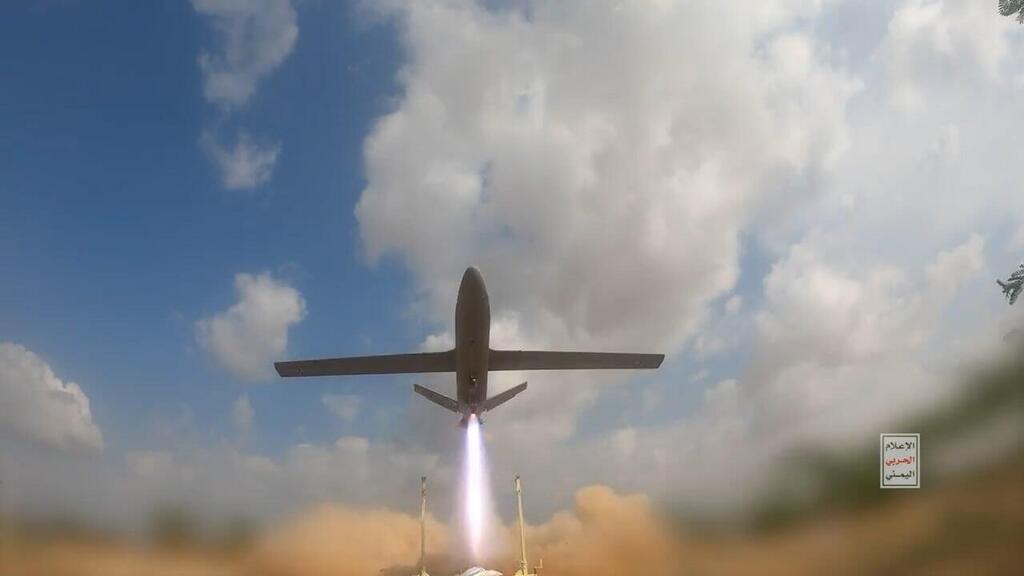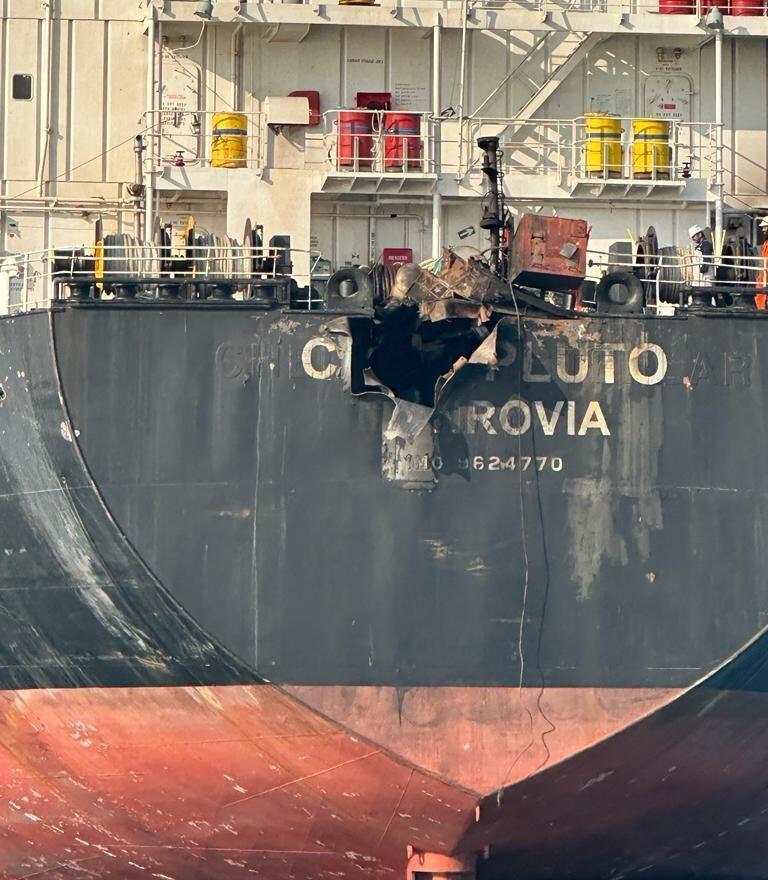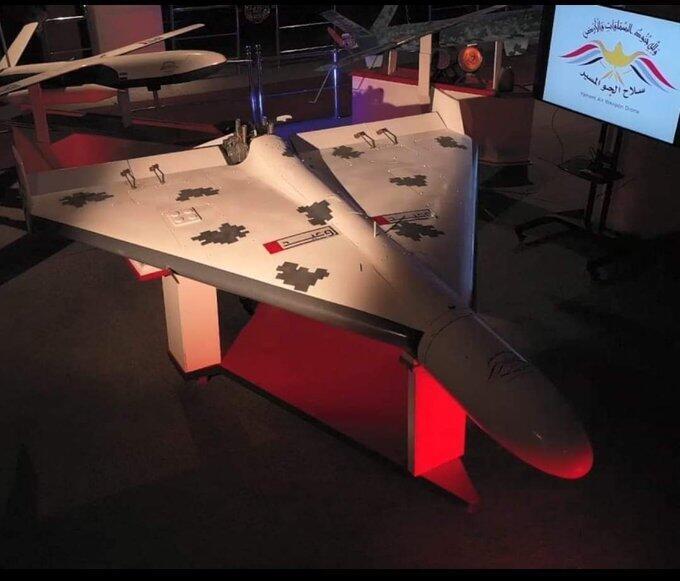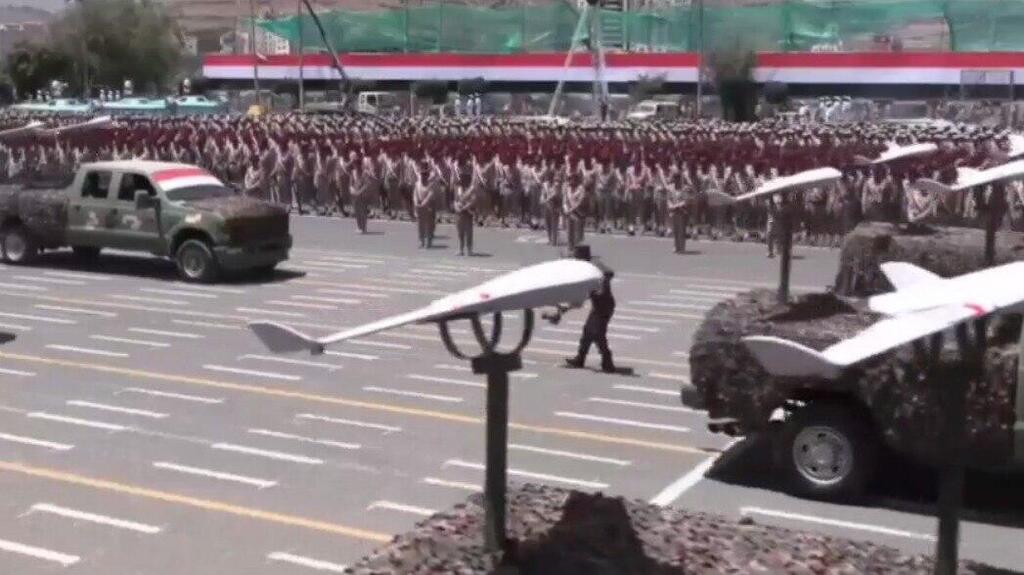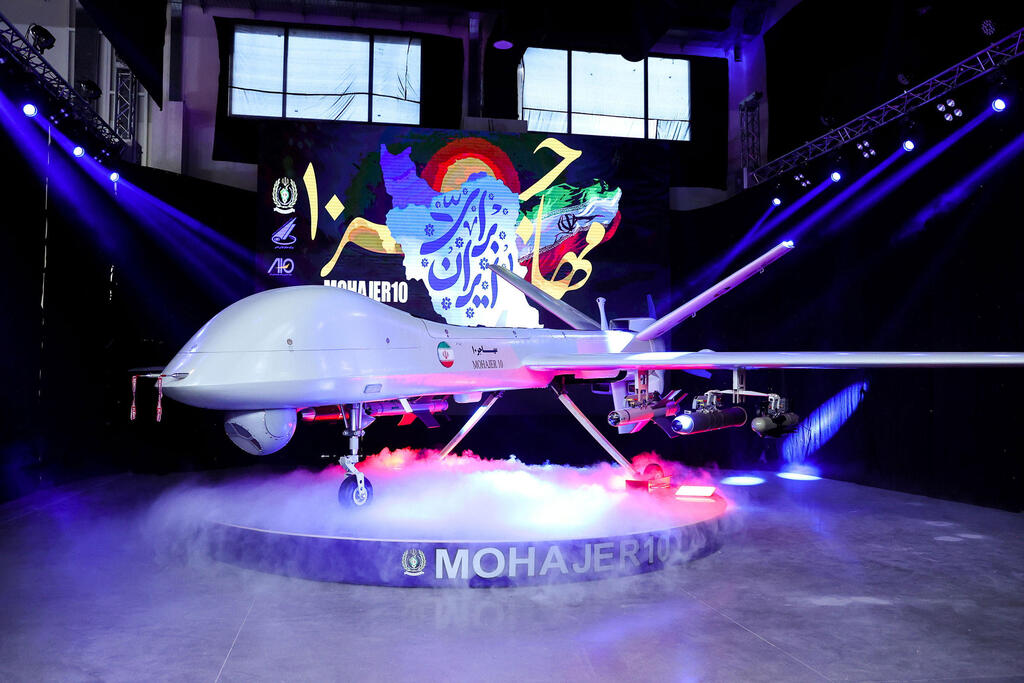Unmanned aerial vehicles (UAVs) have become an increasingly important tool of war in recent years. They’re being used in the current war by Israel, Hamas, and Iran and its allies in battle zones near and far.
More stories:
Hamas used UAVs in its surprise October 7 attack; Pro-Iranian militias use them to repeatedly attack American bases in Iraq and Syria – and have launched them at the Golan and as far as Eilat; The Houthis, alongside launching rockets at Eilat, have (admittedly unsuccessfully) launched UAVs in the direction of the southern city.
The Iran-backed Yemeni rebel group also uses them to attack merchant ships in the Red Sea; Iran recently launched a UAV to attack a ship near the Indian coastline; Hezbollah uses UAVs extensively along the Israel-Lebanon border to both spy on and attack IDF forces.
Hezbollah, the Houthis, and the militia groups in Iraq and Syria all get their arms from Iran. So, we can fairly assume that some of the UAVs in the vast arsenal the Islamic Republic has developed have made their way to its proxies across the Middle East.
With recurrent reports of attacks on Israeli ships and US bases, offensive operations using UAVs on Israeli and American targets are obviously nothing new. But now, the fear that they would be used for terrorist purposes across the Middle East has become a reality.
For Iran and its allies, the fact that UAVs are relatively cheap, yet have high damage capabilities, and that the systems to intercept them are extremely costly – is a huge plus. Warnings regarding Iran’s “UAV army” are also nothing new.
A year and a half ago, addressing the UN General Assembly, former prime minister Naftali Bennet stated that the Iranians “plan to blanket the skies of the Middle East” with UAVs. He continued: “Iran plans to arm its proxies in Yemen, Iraq, Syria, and Lebanon with hundreds, and later on thousands, of these deadly UAVs.”
Iran and its allies have several types of both short and long-range UAVs in various sizes. Some are used for spying, while “suicide drones” with explosive warheads blow up as they self-destruct on their targets. Some do both. The Houthis’ UAVs are described as being for “reconnaissance” purposes.
They use them to spy on ships in the Red Sea that they repetitively attack in an attempt to impose a naval blockade on Israel, and assert pressure on the rest of the world by disrupting critical trade routes.
We have collated a partial overview of the models used by Iran and its allies. It should be noted that these models also have further varieties - amended and upgraded by Iran or various militia groups. So, the data available may vary from one unit to another of the same model.
Al Jazeera reports that the Houthis have an “Al Hudhud” spy UAV: It’s 60 inches long with a wingspan of 75 inches. The Al Jazeera report claims that it can stay in the air for up to half an hour and can reach a speed of 20 mph. The Houthi arsenal further contains the “Raqib” drone that is 40 inches long, has a wingspan of 55 inches, can fly for an hour and a half, but can only travel a distance of ten miles.
The Saudi Asharq news network has reported that the Houthis operate a further “reconnaissance drone” named the “Rassed.” It’s 40 inches long with a 90-inch wingspan and can travel up to 20 miles and can remain airborne for two hours. The Houthis’ fourth drone is the “Samad 1” with reports claiming it can reach at distance of 300 miles and transmit live pictures.
As mentioned, the Houthi rebels use drones for terror purposes. Their arsenal also includes the “Qasef 1” which, according to Al Jazeera, is 8 feet long and has a wingspan of 10 feet. Al Jazeera further reports that the “Qasef 1” can fly a distance of over 90 miles and remain in the sky for two hours and that its warhead weighs 65 lbs. A further drone used for attacking targets is the “Qasef 2” which can fly a distance of over 90 miles and also has a warhead weighing in at 65 lbs.
The Houthis’ weapons cache also includes the “Samad 2” and “Samad 3”, which have 110-lb warheads and can reportedly fly approximately one thousand miles. A 2018 report – denied by the UAE - claimed that the Houthis first used the “Samad 3” in an attack on an Abu Dhabi airport.
According to Al Jazeera, the Houthis also have a drone known as the “Waeed” that has a much further range of up to 1500 miles. At over 11-foot long, and an 8-foot wingspan, its warhead can weigh 55–120 lbs. It is, however, reportedly ineffective for hitting moving targets.
It should be noted that the Houthis have not revealed which models they used in their various attacks on Eilat during the current war. These attacks have also included cruise missiles intercepted by both Israel and the US.
Hezbollah's UAV production
Hezbollah also owns UAVs in a broad range of sizes, used for both espionage and launching offensive attacks. Over the past few weeks, explosive UAVs have occasionally penetrated Israel’s air defense systems, on one occasion killing an IDF reservist on the border.
Arab media reports claim that Hezbollah also possesses locally made “Ayoub” and “Mirsad” drones which, although generally used for espionage, can also be armed. Since 2006, Hezbollah has been working hard to develop its arsenal of UAVs that can reportedly conduct espionage at a distance of up to 250 miles.
One notable instance was in 2022, when Hezbollah launched 3 unarmed UAVs to spy on Israel’s “Karish” gas rig that were intercepted by the Israeli navy.
The “Islamic Resistance in Iraq” - an umbrella organization of pro-Iranian militia groups operating in Iraq and Syria – has recently claimed responsibility for UAV attacks on Israel. Only a few days ago, they claimed responsibility for launching a UAV from Syria that was intercepted by an Israeli fighter jet over Golan Heights.
The umbrella organization further claimed that it launched a UAV at Eilat. If true, it wouldn’t be a first: In November, a UAV launched from Syria exploded in Eilat, “bypassing” Israeli detection systems by flying over Jordanian airspace.
Since current the war began, most UAV attacks by militia groups in Iraq and Syria (alongside rocket attacks), have targeted American bases in these two countries, in response to Washington’s support for Israel. These groups brag about these UAV attacks, repeatedly uploading videos documenting their launches.
Iran unveils high-end UAVs
Iran, itself, has a broad range of UAVs used for both intelligence gathering and for launching attacks. The Islamic Republic has spent years developing an ever-increasing variety of UAVs. Iran has also, reportedly, engaged in “reverse engineering” of American UAVs that have fallen into its hands.
Possibly the best known of Iran’s UAVs is the “HESA Shahad 136”, gaining notoriety for its frequent use by Russia – Tehran’s ally – in its war against Ukraine. The “HESA Shahad 136” weighs 440 lbs, and with a price tag of $20,000 - $50,000 per unit, is considered quite cheap.
Last August, Iran unveiled its new “Mohajer-10” UAV, which it claims can fly for 24 hours at an altitude of up to 4 miles to a distance of 1,200 miles. When Iran unveiled this new UAV, less than two months before the outbreak of the war, it threatened Israel declaring “Prepare your shelters.”
According to Iran, the new UAV can carry a load weighing up to 660 lbs – twice that of the Mohajer-6, the unmanned planes that Iran began manufacturing in 1985. Al Jazeera notes that the Mohajer-6 is equipped with an electronic warfare system. Iran also has “Ababil” UAVs, that can reportedly fly up to 60 miles, as well the “Kaman” drone that can fly ten hours with a warhead weighing 200 lbs.




